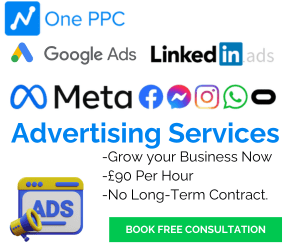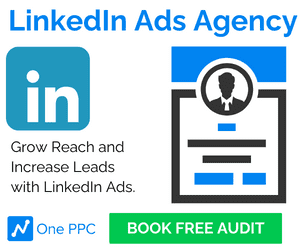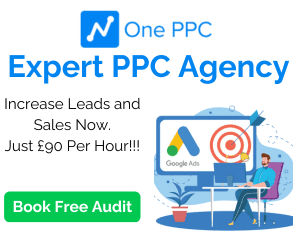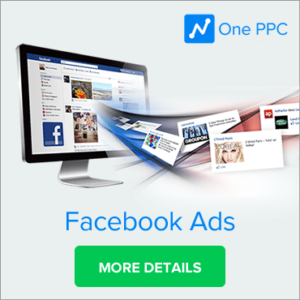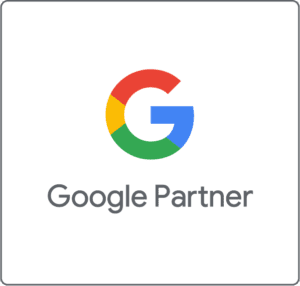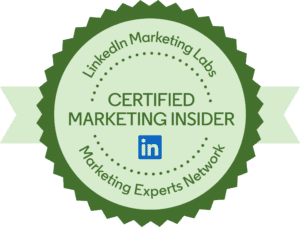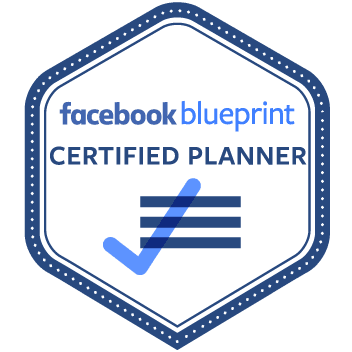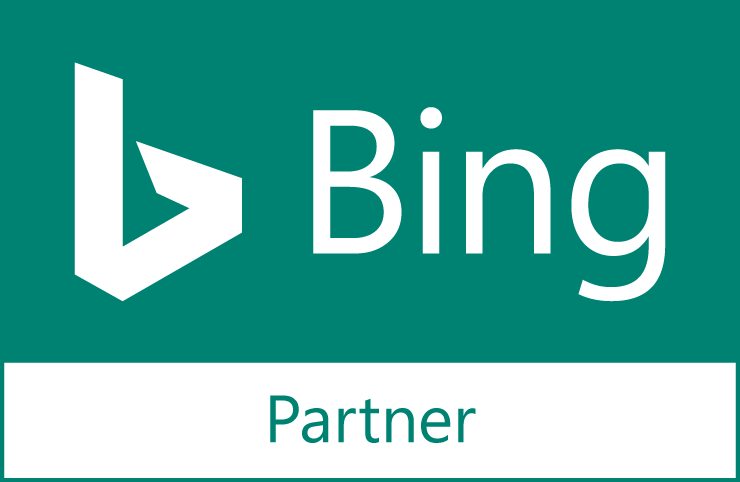The online world has changed not only how and when we view advertisements. If we’re the ones delivering them, it has also changed how we do that, too. Especially if that’s through the Facebook social media network.
With over 2 billion daily users and a ubiquity across almost all demographics, Facebook ads can be extremely successful. However, when you launch an ad campaign on Facebook, it doesn’t have to simply go everywhere.
Facebook is fast becoming as important a platform as Google search for companies looking to generate leads. Facebook is so influential that many people think that it is the internet, providing them with everything they need, from social interactions with friends to the ability to buy products online. The social media giant, therefore, is fast becoming an essential lead-generating tool.
Facebook Ads targeting can help you get a lot more specific with both your ad budget and the recipient of those carefully constructed marketing messages of yours. Let’s take a closer look at how it works.

Table of Contents
- What is Facebook Ads targeting?
- Core Audiences: Who can you target?
- Remarketing / Warm Audience Targeting
- How to use Facebook Ads Targeting in 8 Steps
- Tips for using Facebook ads targeting
- Facebook Core Audiences in Detail
- Use Behaviour-Driven Ads
- Target People With Related Interests
- Base Facebook Ads On Demographics
- Use Location To Your Advantage
- Use Connections
- Combination Target OR | AND
- Summary
What is Facebook Ads targeting?
This technique is exactly what it sounds like from the name. When you create an ad campaign on Facebook, you can simply let it show to the whole world, spending your ad budget on whichever customers happen to see it first. However, that’s not how the majority of Facebook ads users use it.
Instead, they use Facebook ads targeting, also known as “Audiences” in the social media platform itself. This allows you to choose who exactly your ad is going to appear to. You can include certain groups and exclude others. The goal of this is, in most cases, to make sure that the ad reaches your target market above all else.
Target categories you can highlight or exclude include: location, age, gender, level of education, even income and job title. When you can get super specific with your targeting, you can make sure your ads hit their intended target above all else. This means that your ad budget can be spent efficiently on those members of the audience who are most likely to convert into paying customers according to your own research.
Core Audiences: Who can you target?
There are quite literally hundreds of way you can customise your Facebook ads targeting. When you first move to create an Audience on Facebook, the sheer level of choice can be quite overwhelming. You don’t need to use every single option available, but here are some of the most frequently used targeting options to think about:
- Demographics: This includes a wide variety of factors that can apply to portions of the population, including age, gender, marital status, income, industry, job title, and so on. There are a lot of demographic options so take your time to view them and get used to them.
- Location: Where your ad audience is in the world. You can get extremely specific, choosing not just the country, but the state or county, locality, city or town, even right down to the zip code, which can be extremely useful for local advertising.
- Interests and brands that are followed by the user. You can choose pages, events, business users and the like that people follow. For instance, you can target followers of your own business page.
- Partner connections can even be used to target Facebook users who have focus specifically on behaviours outside of Facebook using data collected from partners. For instance, you could use it to target those who have recently signed up to a gym.
- Behaviour Targeting lets you target people based on their prior purchase behaviours, device usage and other activities
The techniques above are known as “cold traffic.” Meaning, much like cold calling, you’re likely targeting traffic that hasn’t interacted with the business before. Next, we can look at the retargeted traffic options, which focus on those who are aware of your business and have interacted with it before:
Remarketing / Warm Audience Targeting
- User engagement, which can most effectively target those customers who have engaged with your page or posts in the past. This includes those who have left comments, likes, shared your posts, and so on. Video viewers who have watched media that you have specifically uploaded to Facebook before. This is remarketing on Facebook – reaching people lower in the funnel than the first campaign.
- Website visitors those who have been to your own website and have a cookie that Facebook uses to retarget them.
- Custom lists. You can even upload your own data of names and users to Facebook directly. This can, for instance, include all past clients or those who have signed up to your newsletter in advance.
With retargeted traffic, you can create audiences that not only fit your target market definitions but also for those campaigns aimed at those well aware of what you do already that may need another push to convert or could be reached with an additional service or product.
How to use Facebook Ads Targeting in 8 Steps
With the myriad ways that you can customise how your Facebook ads work and who they target, it’s worth learning how to use the system, perhaps even giving it a minimally budgeted test run to get to grips with it.
Let’s look at the steps of how you use Facebook ads targeting from start to finish:
- Use the Business Manager tool on your business Facebook account, which can be found in the top-right menu, and click on “Audiences.” From here, you will be able to see options for Saved Audiences, Custom Audiences, and Lookalike Audiences.
- Saved Audiences are the simplest option, allowing you to choose amongst demographic options, locations, connections, and behaviours to narrow the focus of an ad down to your target market.
- Custom Audiences are those that are aimed at increasing retargeted traffic. Here, you can upload what are known as “Customer Files”, such as MailChimp lists, that immediately helps Facebook target a pre-defined list of leads. You can also install Facebook Pixel to your website, which allows you to target those users that have been to your website before. Similarly, you can register your app to Facebook and target its users, too.
- Facebook Lookalike Audiences allows you to use past Audiences to target those who share traits with them, like location, to extend the reach of the campaign
- You can use options to exclude people or narrow further so, for instance, for a locally based campaign, you can reduce how the area of where your ads go so you’re targeting those closest to the business.
- Set up your ad campaign, choosing the campaign objective (such as clicks, conversions, reach, and so on), campaign name, and where your ad is going to be placed (including different devices, different Facebook feeds, Instagram, and so on).
- Set up your budget and how much you’re willing to bid on each ad before choosing your preferred ad type, typing in any copy and attaching the media (photo, video or website link).
- Apply the pre-created Audiences of your preference to give those ads targeting preferences, and submit it when you’re ready.
Tips for using Facebook ads targeting
With the step by step mentioned above, you should know how to get your Facebook ads off the ground and towards your preferred targets, but what are the best strategies to use with this tool? Here are a few tips worth following:
- Do your research. If you’re narrowing your ads down by demographic, make sure that your data supports any preconceived notions you have about who your audience is. Collecting data through Facebook analytics (Audience Insights, in particular) and questionnaires or sign-up forms is a good way to figure out who exactly your audience is before you start targeting them.
- Targeting customers first is always a worthwhile tactic. You want ads to be shown to those most likely to convert. It’s much easier to retain an existing customer and convince them to spend again than to win a new customer over for the first time.
- Aim for larger target audiences if you’re not remarketing but instead targeting new prospects. The more people, the less you end up spending to gain the attention of every individual user. These savings take effect after the campaign has been running for a while and Facebook has been able to optimise who exactly it targets.
- Excluding audiences is just as important as including them. It can be used not only to exclude those you believe wouldn’t be interested in your products but also to avoid target overlapping. If you use 3 different categories, you’re not likely to be targeting 3 wholly separate groups of people, so you can use exclusions to make sure that Facebook isn’t just focusing on the same audiences time and time again.
- Use your Facebook ad posting not only for new ads, to boost past media posts that have already performed very well amongst your own audience. By broadening their reach and visibility, you can capitalise on content that has already proven effective.
These are just a few examples of tips and techniques you can use to ensure your Facebook ads targeting goes well. Do plenty of your own research and make sure you review the results of every campaign to see which strategies work best for your specific brand, product, and audiences.
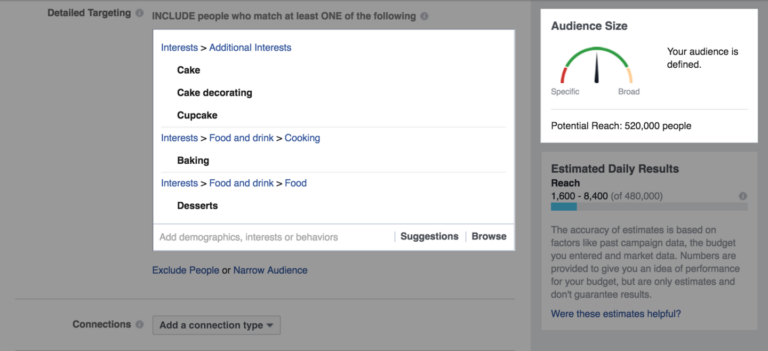
Facebook Core Audiences in Detail
Learn more about how you can get the most out of core audience targeting.
Use Behaviour-Driven Ads
The idea behind behavioural ads is to identify potential leads from interactions that they have with your business. Communicating with customers using ads is a costly activity, and so you want to be sure that the people that you’re targeting are likely to make a purchase eventually.
What behaviours are you looking for? Many skilled marketers target leads with Facebook ads who do things like read a blog post on the company website, use a particular kind of mobile device, abandon their shopping cart mid-sale, or will soon be celebrating a birthday. These “behavioural signals” indicate to companies that a person is more likely to make a purchase, increasing the potential return on each advertising pound spent.

Target People With Related Interests
Facebook is a treasure trove of information. People share all kinds of marketing-relevant details on their social media pages that companies can use to determine whether he or she is a prospect or not.
A user, for instance, may include information about their interests in their profile. Related companies can then use this information to generate leads automatically and can scour posts and status updates for additional information about what activities a person might like.
Take a look at the following examples:
- Sports accessory companies: updates on recent sporting events, team memberships, or opinion on match results
- Cycling-related companies: photos of recent cycling trips, membership of cycling groups, or mention of key cycling personalities
- Food-related companies: updates concerning frustration with home cooking, recipe posts, or recent trips to a restaurant
- Hospitality-related companies: hotels, spas and salons can target people who want to feel pampered
Check out this article to learn more – Ultimate Guide Interests targeting
Base Facebook Ads On Demographics
Facebook provides advertisers with information on a user’s age, gender, languages spoken, level of education, occupation, and relationship status. Smart advertisers can use this information to find people who fit their “buyer persona” – a description of the kind of person who is most likely to benefit from the firm’s product.
By choosing people who fit your buyer persona, you maximise the chances that your Facebook ads will be effective. Only the people who stand to benefit the most from your ads will see them, helping you avoiding wasting your precious marketing budget on prospects with little or no chance of actually buying from you. To learn more more check out our article The Ultimate Guide to Demographic Targeting

Use Location To Your Advantage
Location-based advertising is a godsend for many small businesses in the realm of search. Advertising one’s business using location on Google, for instance, helps firms better target keywords in their vicinity, boosting visibility on search results.
The good news is that you can apply the same principles on Facebook. If you sell locally, then you can use Facebook ads to target people who live within, say, a 20-mile radius of your location. Many kinds of companies find location-based ads helpful for generating leads. Car mechanics, window cleaners, tradespeople, legal firms, accountants, and restaurants can all benefit from attracting customers from the local area.

Use Connections
The chances are that if somebody on Facebook loves your product, their friends will too. People tend to associate with like-minded people who share their interests. No, the correlation isn’t one-to-one, but it can be good enough to help you better target your marketing pounds.
What kind of people could you target with ads on Facebook with connections targeting.
- People who are friends with regular customers
- People who have shown interest in their friends’ posts about your products (or activities related to your products)
- People who like or share your pages with their friends
- People who are friends with customers who use your apps.

Combination Target OR | AND
In the past, most advertisers were limited to being able to target single interests OR, single behaviours. This made core audiences wider, and therefore more suited for top of the funnel marketing than direct response marketing. These “wider” core audiences often had a lower relevance score on Facebook- which lead to higher advertising costs and less attractive ROI.
In 2016 (finally!!!)- the Facebook ads audience builder was updated to combine core audiences targeting using “AND” statements. This update has been a revelation for building more qualified audiences. These set up is also known as narrowing the audience
What are Detailed and Narrow Audience targeting on Facebook?
Narrow audiences are the ability to combine Core Audiences such as 2 or three interests, behaviour, and more combinations. These filtered audiences are built using AND combinations where people within an audience MUST ALSO match at least ONE of the following.
Improvements to Facebook Core Audience Targeting means more opportunity for
- Higher relevance score (lower advertising costs)
- Higher conversion rates for advertisers. (lower cost per lead or sale)
- Measurable branding. (If it working for CPA, it is certainly working for brand).
Summary
Hopefully, the guide above has has given you a great introduction to Facebook ads targeting that you need to know, from what it is to how to use it to great strategies for it. Now, all that’s left to do is find the audience your ad is best built to reach and use Facebook ads targeting to ensure you reach them every time you launch a campaign. Checkout the related blog posts for mode in depth details of each area.




